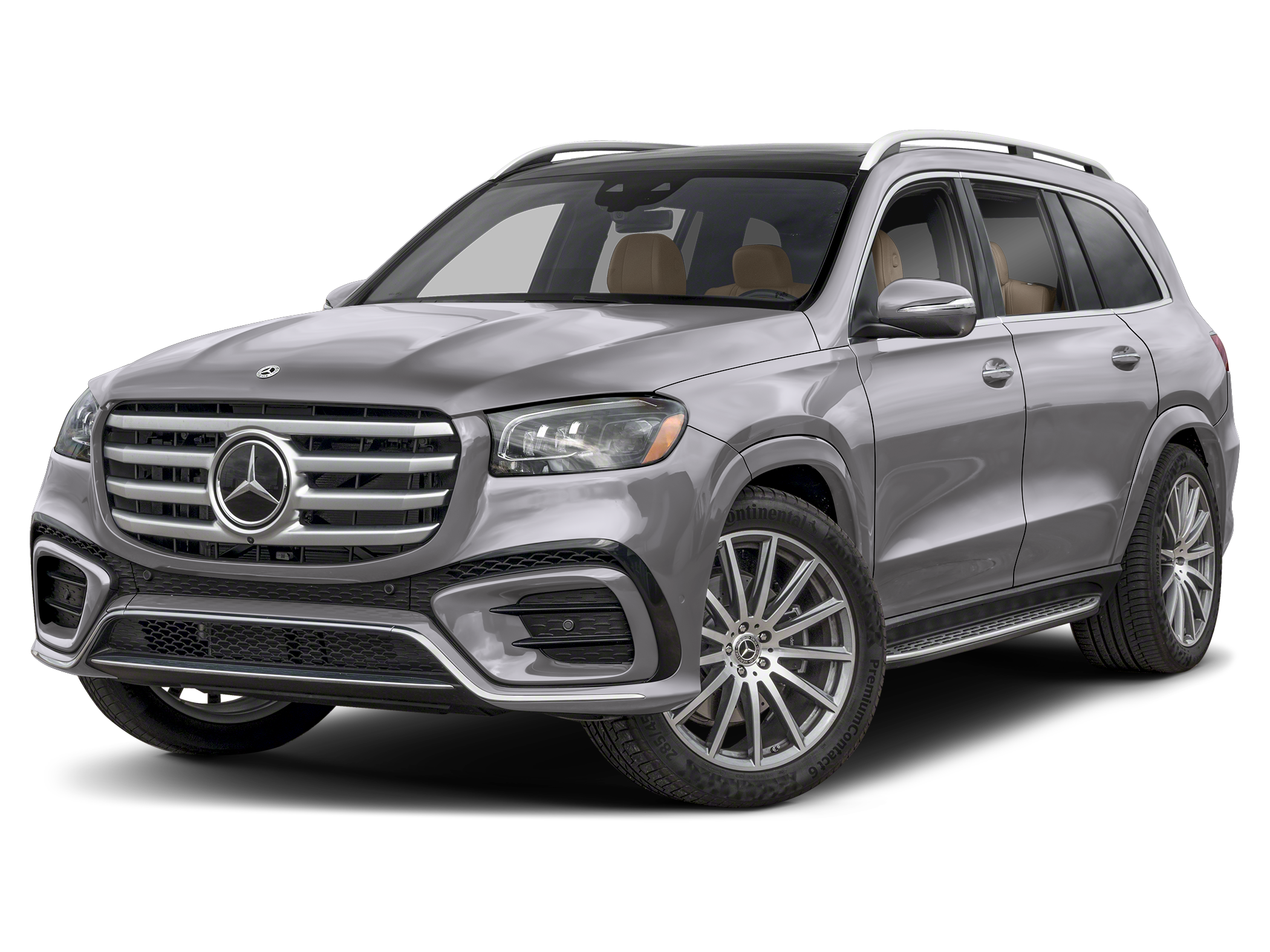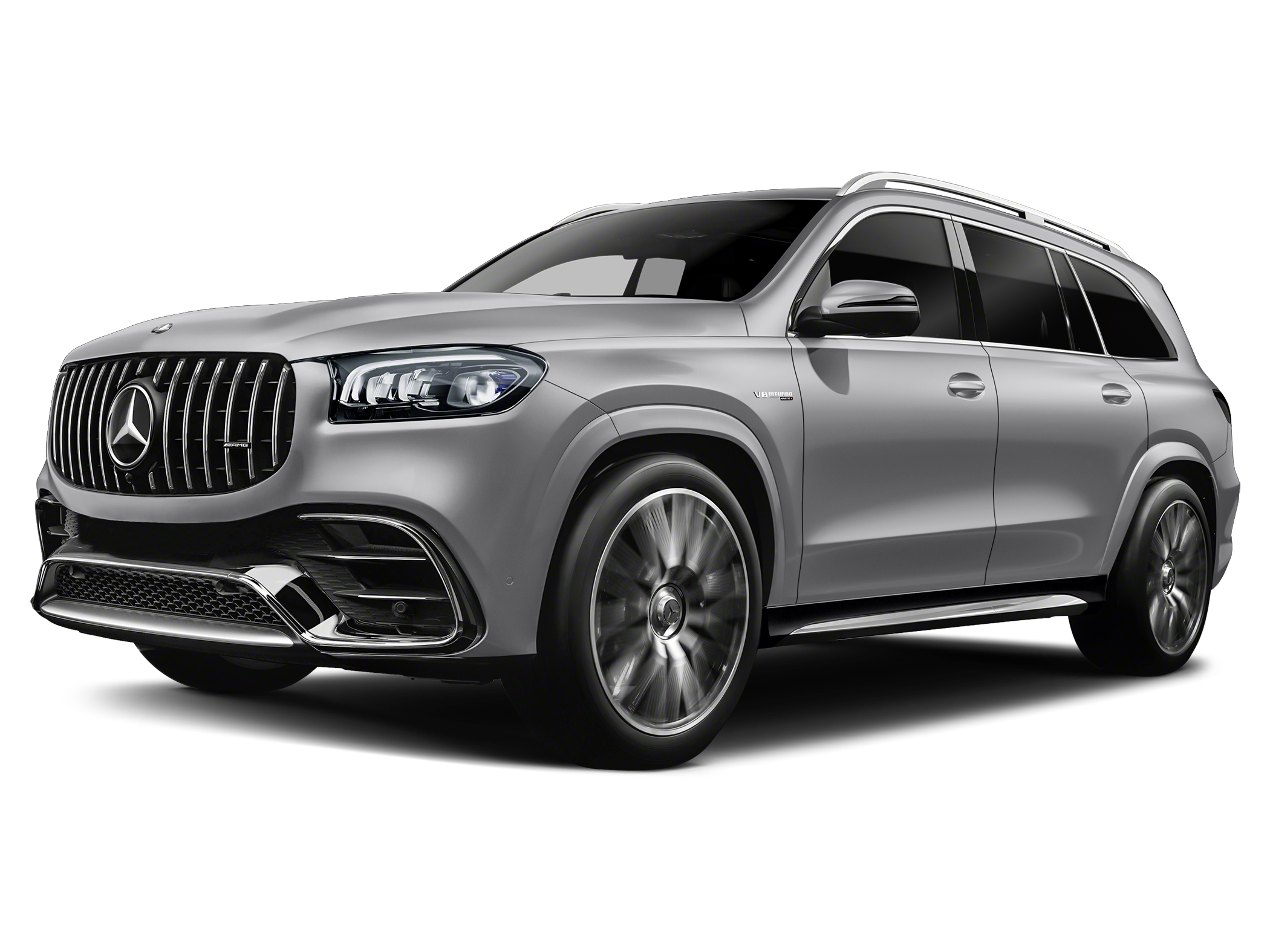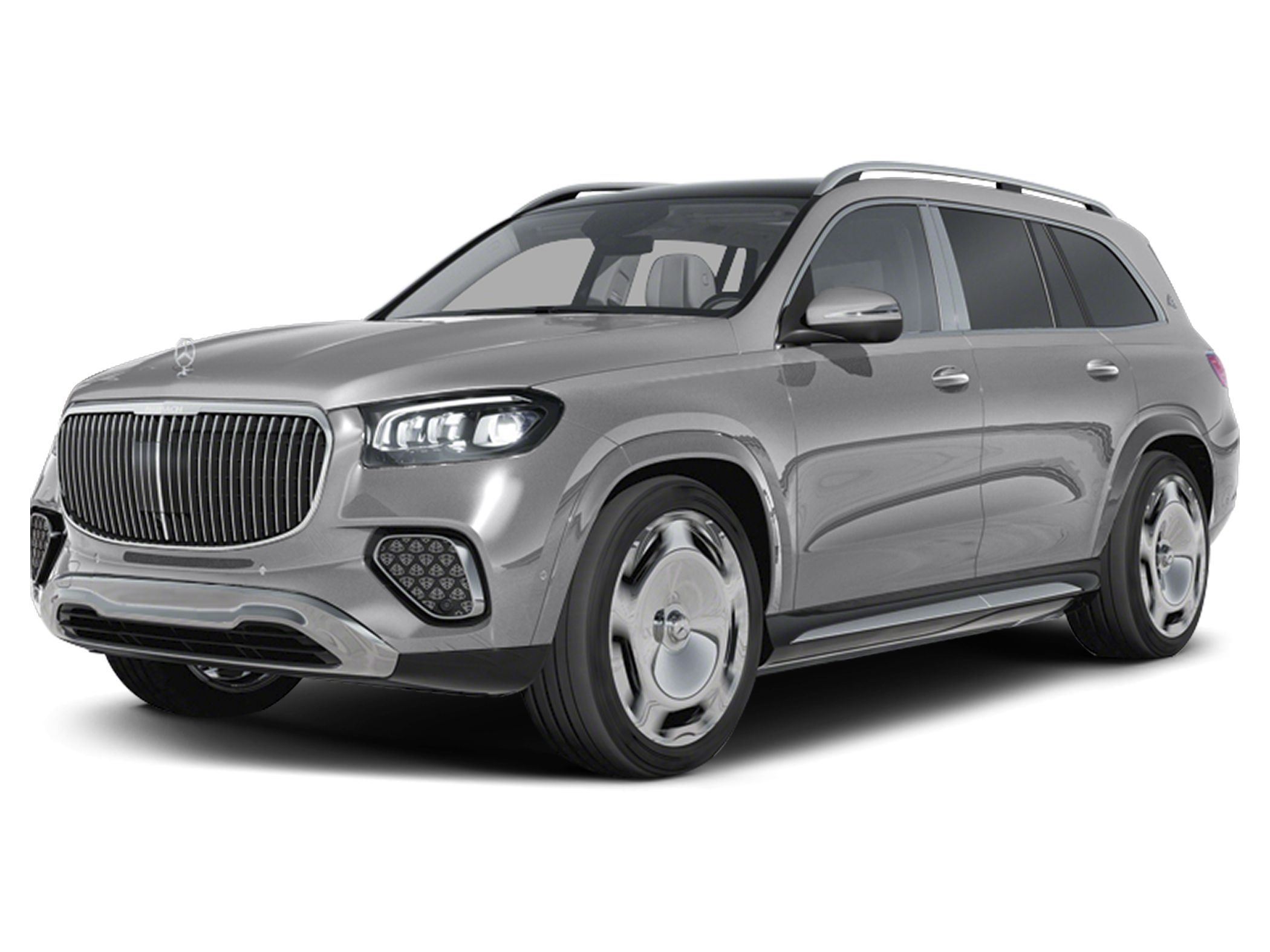REVIEWS AND RATINGS
What others are saying
REVIEW AND TEST DRIVE
2024 Mercedes-Benz GLS 580 Review and Test Drive
Fresh tech and updated styling result in a thoroughly luxurious — but expensive — SUV.
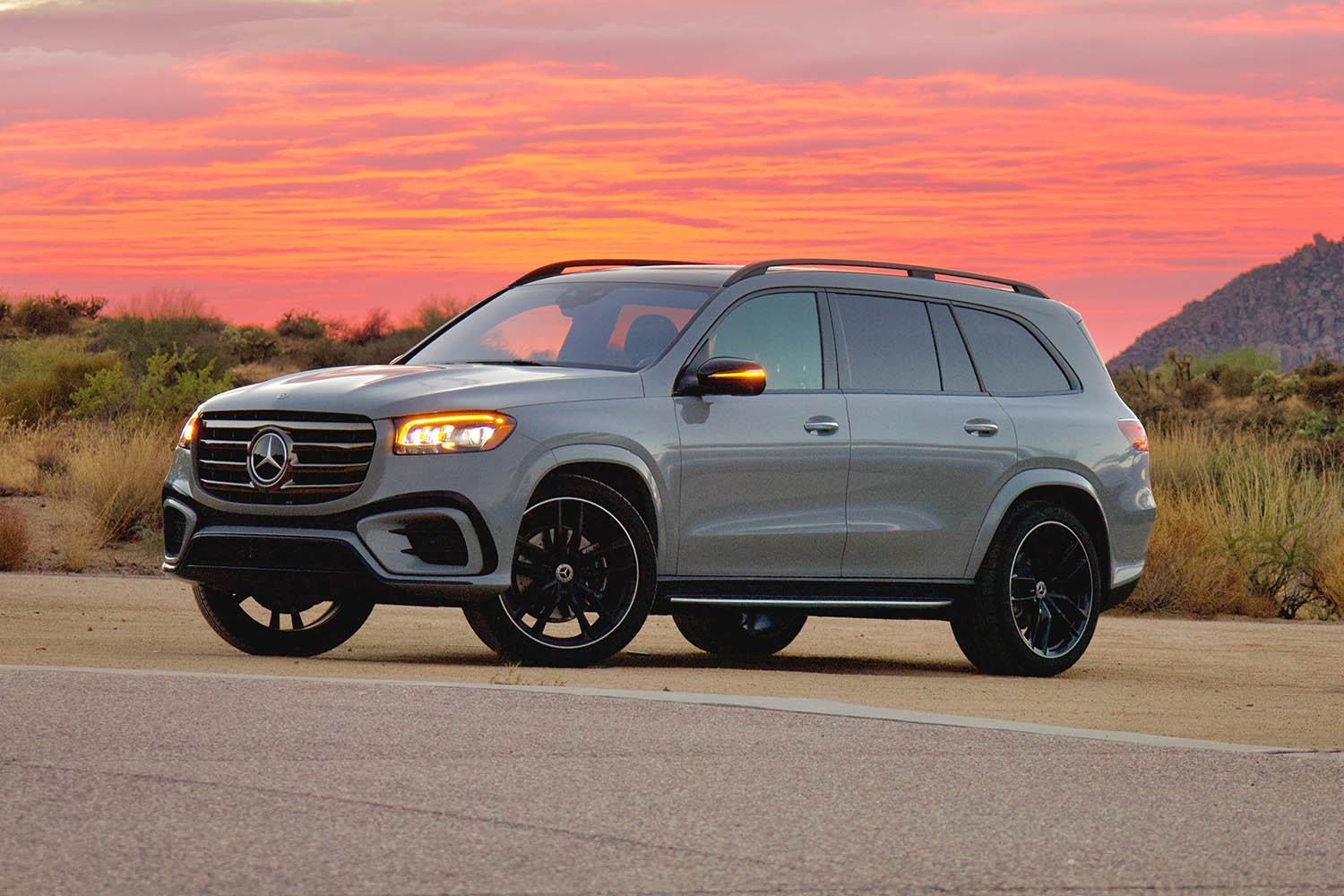 Jim Resnick
Jim Resnick
As Mercedes-Benz's largest SUV, the GLS-Class can hold up to seven people, stow all the luggage you can reasonably dream of, or tow 7,716 pounds behind it, all while cosseting you and your cohorts in what can be pricey luxury. It also includes a capable four-wheel-drive system under its floorboards. Only some may choose to venture into the hinterlands to attempt rock climbing and river-fording with a machine that can easily cost more than $100,000.
This year, the 2024 Mercedes-Benz GLS-Class gets additional power and slightly revised design elements. On the outside, the GLS receives a redesigned grille and front bumper, in addition to new LED taillights. Inside, there are two new color options, not to mention a new steering wheel. The infotainment system receives updated graphics, and there's more standard driving-assistance technology than before.
It's important to point out that Mercedes also makes the much boxier, more off-roadable G-Class in G550 and AMG G63 formats, which are on a separate platform from the GLS-Class models.
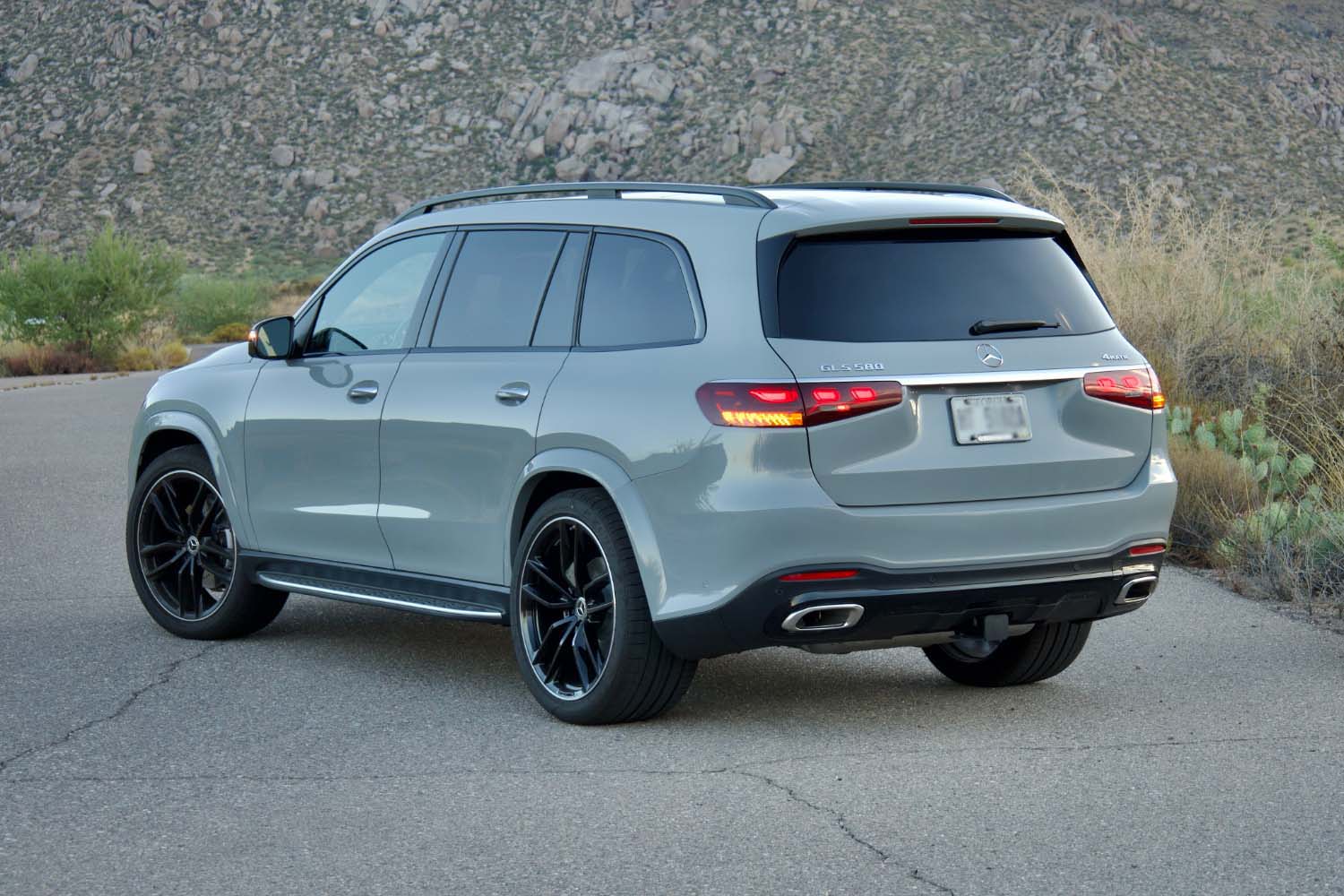 Jim Resnick
Jim Resnick
Mercedes offers the GLS-Class in four variants. The range starts in the high $80,000s for the GLS 450 and tops out in the mid-$170,000s for the maximum-luxury Mercedes-Maybach GLS 600. In between these models, you'll find the GLS 580 and the Mercedes-AMG GLS 63.
For this review, I tested the middle-range GLS 580 in Arizona. Options included special Alpine Grey paint, 23-inch five-spoke AMG wheels with high-performance summer tires, and a Night package with black exterior trim. In addition, the test model had a Premium Plus package; an Acoustic Comfort package with glass that protects passengers from heat, noise, and infrared light; two wood trim packages; a combination wood/leather steering wheel; Nappa leather upholstery; rear side airbags; a Burmester 3D Surround Sound audio system; and several smaller options.
These upgrades brought the manufacturer's suggested retail price to $128,880, including the $1,150 destination charge. Mercedes-Benz provided the vehicle for this GLS 580 review.
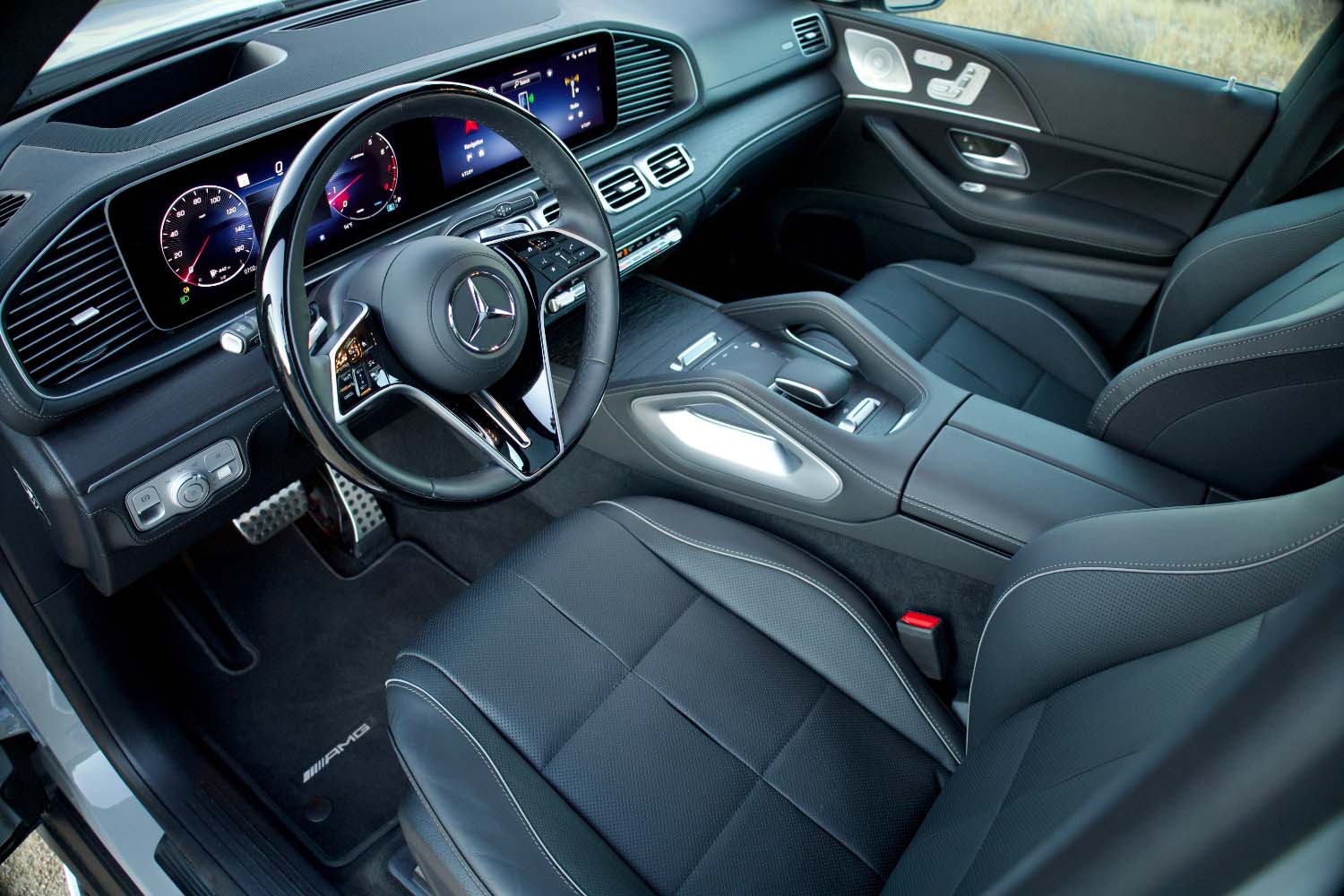 Jim Resnick
Jim Resnick
2024 Mercedes-Benz GLS 580 Review: The Design
The Mercedes GLS 580 conveys attractive looks and a dash of style, in addition to showing a strong family resemblance to its siblings.
The 2024 GLS 580's front end wears an updated bumper and grille and gets a slight rear tweak with three LED taillight elements per side, but the overall look is unchanged.
Inside, the big GLS 580 exudes richness and attention to detail. You'll find top-quality materials, outstanding fit and finish, and precise switches and controls. My test vehicle's leather seats, stainless steel-textured metals, plastic, screen glass, and rubberized touch points suggest the GLS 580 is likely to meet high expectations, even considering the whopping sticker price.
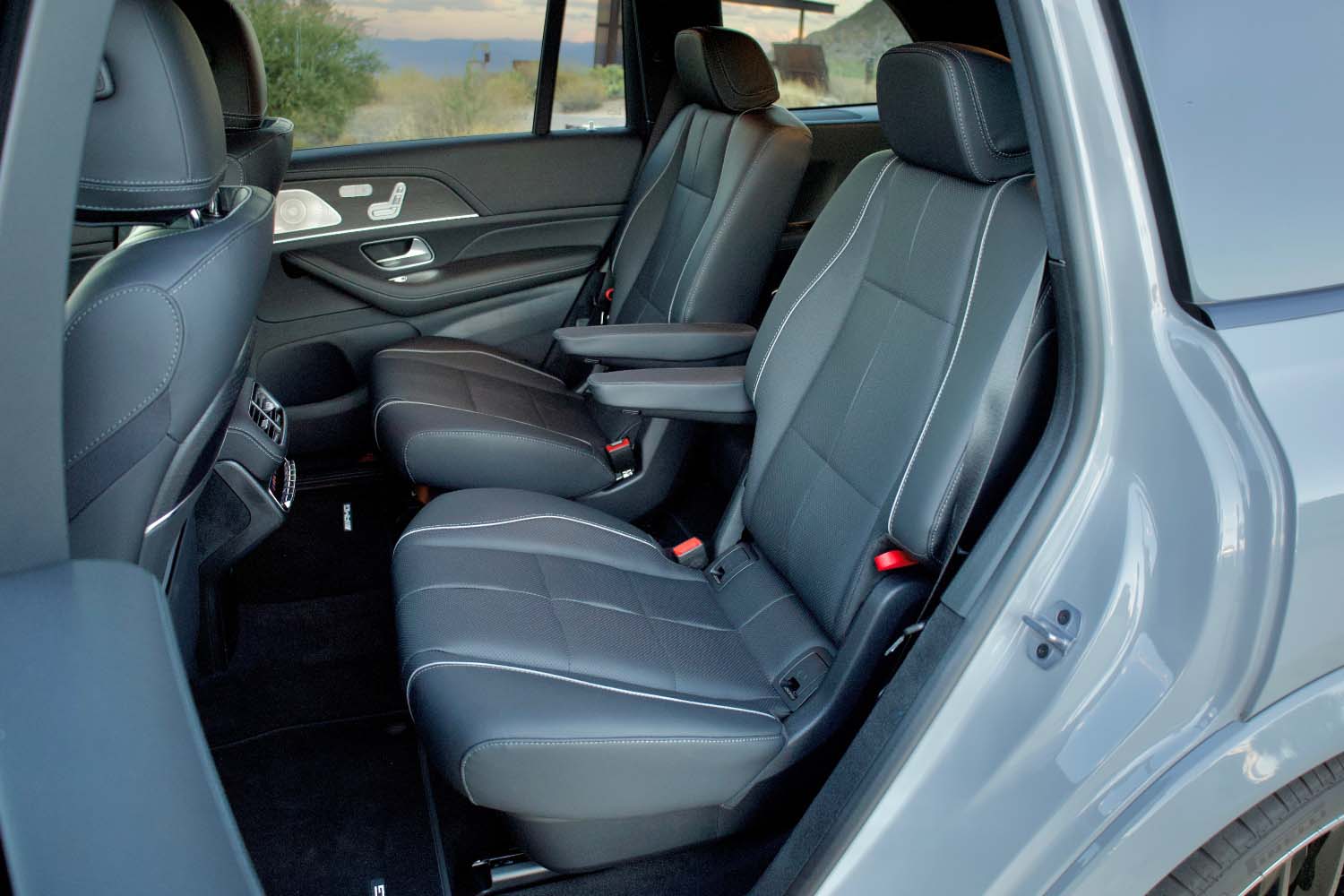 Jim Resnick
Jim Resnick
The front seats are a paragon of automotive virtue, offering great support and comfort and a firmness friendly enough to make multiple hours behind the wheel possible without undue fatigue. My test vehicle also had massagers in the front seats, which offered several different waveforms from the air bladders hiding under the leather.
Switches to adjust seat position are on the doors, along with seat heating and cooling controls. However, lumbar adjustments are accessible from within the infotainment screen in the Comfort menu.
The test vehicle's captain's chairs are among the best second-row perches I've encountered over the past year. These individual second-row seats make the GLS a six-seater rather than a seven-seater, but it offers plenty of leg-, hip-, and headroom. They also have controls for adjustments on each respective door, just like the fronts.
Getting into the high-riding GLS 580 might require a climb, depending on your height, but you can lower the suspension. Activate the Entry/Exit Level function and the GLS 580 lowers about an inch from standard ride height and rises back up at speed. A button inside the cargo area lowers the SUV's ride height to ease cargo loading.
The third row is short on space for adults, I found. Also, the power assist tethered to the second row can make accessing the third row a painfully slow process. There's one upside, though. Not only are there dedicated climate controls for the second row, but the GLS 580 also offers them in the third row, and all those climate adjustments show up on the main front infotainment screen.
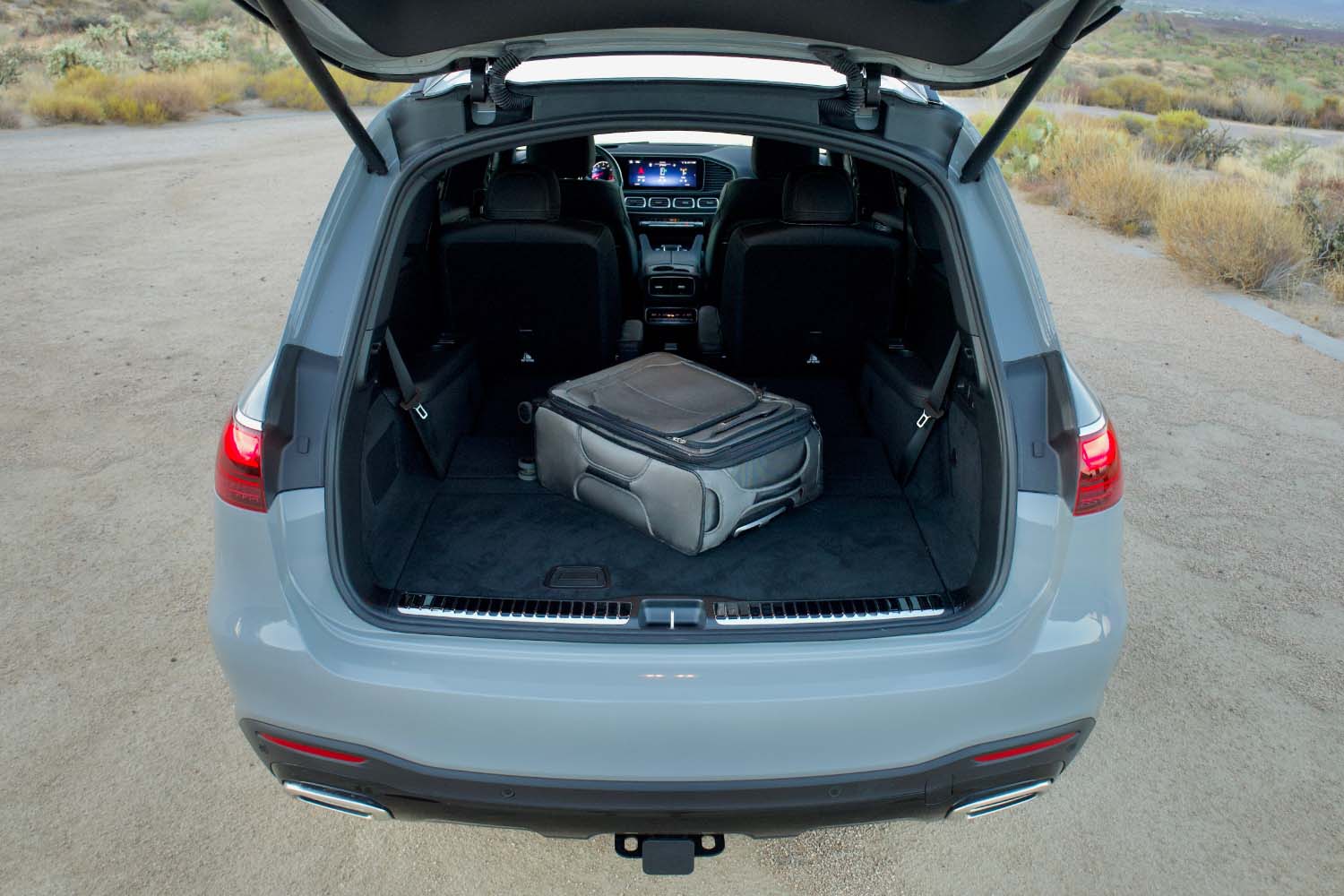 Jim Resnick
Jim Resnick
There's generous cargo space in the GLS-Class, with 17.4 cubic-feet behind the third row, 42.7 behind the second row, and a maximum of 84.7 with both rows lowered. BMW's X7 offers a tiny bit more space, except behind a raised third row. The Cadillac Escalade tops those with a cavernous 121 cu-ft behind the first row, 72.9 behind the second row, and 25.5 behind the third row.
Up front, there's plenty of storage for small personal items in the center console, the door pockets, and the glovebox. That glovebox also houses the fragrance atomizer (interior perfume). Since I am allergic to some perfumes, I did not test this feature.
The sum of all the parts and features inside the GLS-Class makes the SUV a relaxing place to sit and watch the world go by, drive from state to state, or even nap while waiting for the kids at football practice.
 Jim Resnick
Jim Resnick
2024 Mercedes-Benz GLS 580 Review: The Technology
Mercedes' MBUX (Mercedes-Benz User Experience) infotainment and in-car tech is one of the most intuitive systems I've experienced. A glass pane two-thirds the width of the dashboard presents the configurable instrument cluster in front of the driver and the multi-tile infotainment screen in the middle of the dash. These both measure 12.3 inches across. Though they are separate digital displays, the glass imparts the look of a single display. It's an excellent example of fluid design that presents something as being more simple than it is.
Controls on the steering wheel operate the digital instrument panel. Unfortunately, you can easily activate the steering wheel controls by mistake, inadvertently changing radio stations or the instrumentation display. In addition, though the interior is first class, the font size Mercedes uses for labeling switches and buttons was too small for me.
For several years, Mercedes' voice-recognition software has enabled natural speech to instruct a virtual assistant. Once you've said, "Hey, Mercedes," the assistant wakes up and asks how it can help. Names or places that often pose a challenge to virtual assistants don't trip up the system. Restaurant names including SumoMaya posed no problem. Also, telling the system "I'm hot" will lower the temperature and increase the climate control's fan speed.
Pairing my iPhone initially to the system through Bluetooth proved easy. However, on two occasions when I returned to the vehicle, it refused to pair. I had to turn off Bluetooth on my phone and reconnect after some ghost in the machine was excised.
Once connected, though, there's an ever-present CarPlay tab at the top left corner. This makes toggling to and from the car's native navigation, audio, or other system back to your phone's apps quick and easy. There's no need to go through one or more menus to access your phone through CarPlay or Android Auto.
My test vehicle had the optional Burmester 3D Surround Sound system with a flabbergasting 26 speakers in the roof, dash, doors, and floors. It's worthy of extra examination.
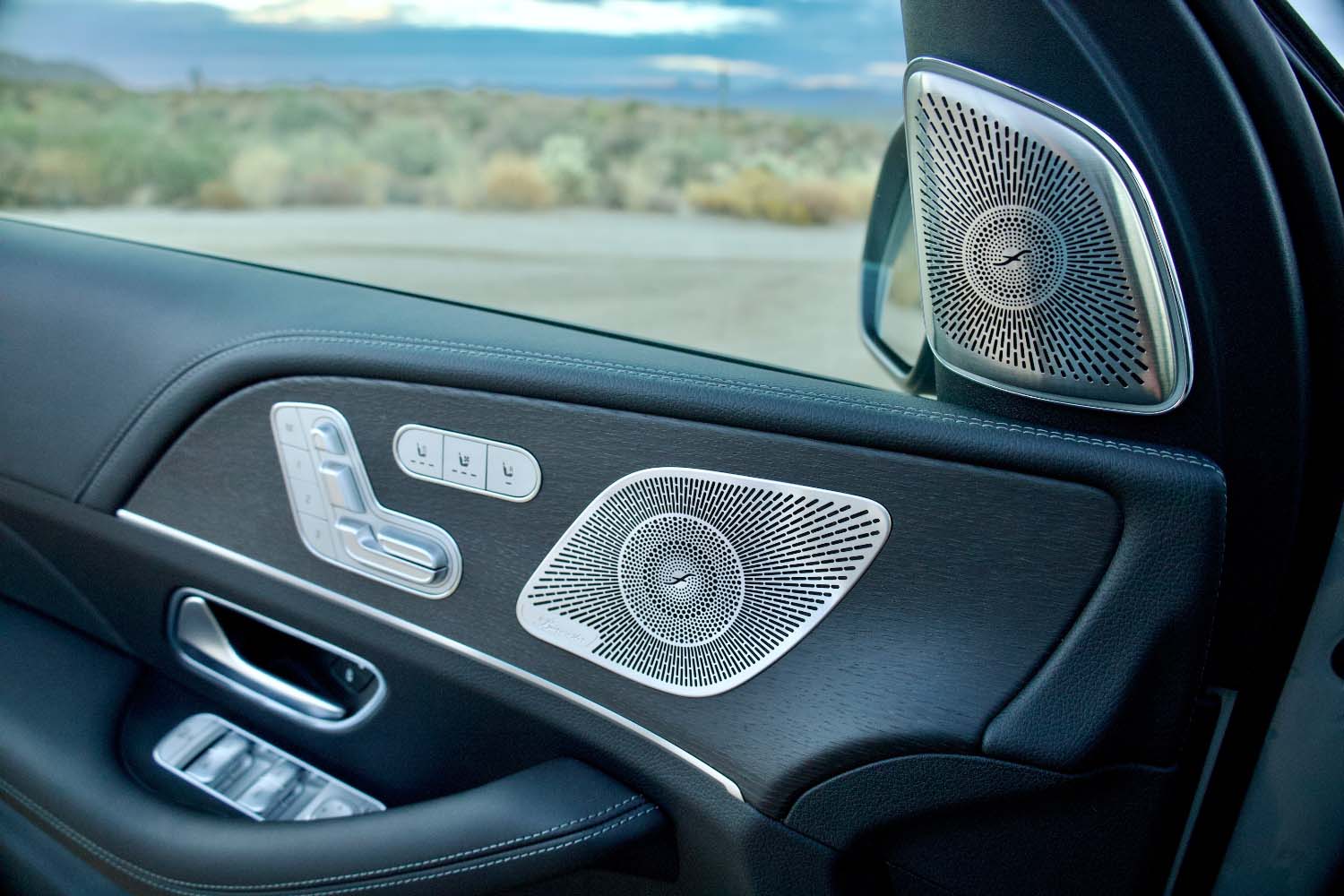 Jim Resnick
Jim Resnick
Mobile audio is a thing of consternation for audio engineers. A 17-foot-long tube moving over various types of roads, generating its own varieties of noise and bolted to an internal-combustion engine is a thoroughly inhospitable environment for high-quality sound reproduction.
The GLS 580 quells as much automotive racket as possible to provide a low noise floor for those 26 speakers to generate stunning sound. It also doesn't hurt to have a staggering 1,610 watts driving the system. To put that figure in perspective, the audio system for the biggest concert at Shea Stadium in New York City in 1965 used four 175-watt Altec 1570 amplifiers for a total of 700. This GLS 580's audio system has well over twice the wattage of the system used at The Beatles' largest concert ever played.
My musician's ears found the 3D Burmester system likely the best vehicle-bound audio system since the Maybach 62 of the early 2000s, which was driven by a mere 600 watts through 21 speakers. If you're a fan of any music, opt for the 3D system.
 Jim Resnick
Jim Resnick
Based on a comparison between my test vehicle's window sticker and last year's GLS 580 model, it appears several formerly optional advanced driving-assistance systems are now standard. They include adaptive cruise control, lane-centering assist, and a blindspot-assist system that uses the brakes to discourage unsafe lane changes.
During the evaluation, the test vehicle's adaptive cruise control made smooth changes in cruising speed on the highway as cars ahead changed lanes, and the lane-centering assist kept the big SUV in the middle of the lane. However, there was a glitch, and I confess, it was somewhat self-inflicted. The lane-centering assist requires always keeping a hand wrapped around the wheel. As with any brand's steering-assist system, a warning light instructs you to retake the wheel if you let go for more than several seconds.
In the GLS 580 test vehicle, the system warned me several times to retake the wheel even when I had not removed my hands. Looking deeper into this, I learned that there's a sensor mat under the leather of the steering wheel on both the front and back sides of the rim. If you touch only the front or the back side or grip them very lightly, it could trigger a warning.
Once I stumbled upon an unwarranted alert, I activated it intentionally a few times, even with my hands on the wheel. While this cycle of warning by the car is in no way dangerous — it's overly cautious, if anything — owners might rethink where and how they grip the wheel to prevent it.
As of publication, the National Highway Traffic Safety Administration (NHTSA) and the Insurance Institute for Highway Safety (IIHS) have not performed crash tests on the 2024 GLS. Check the
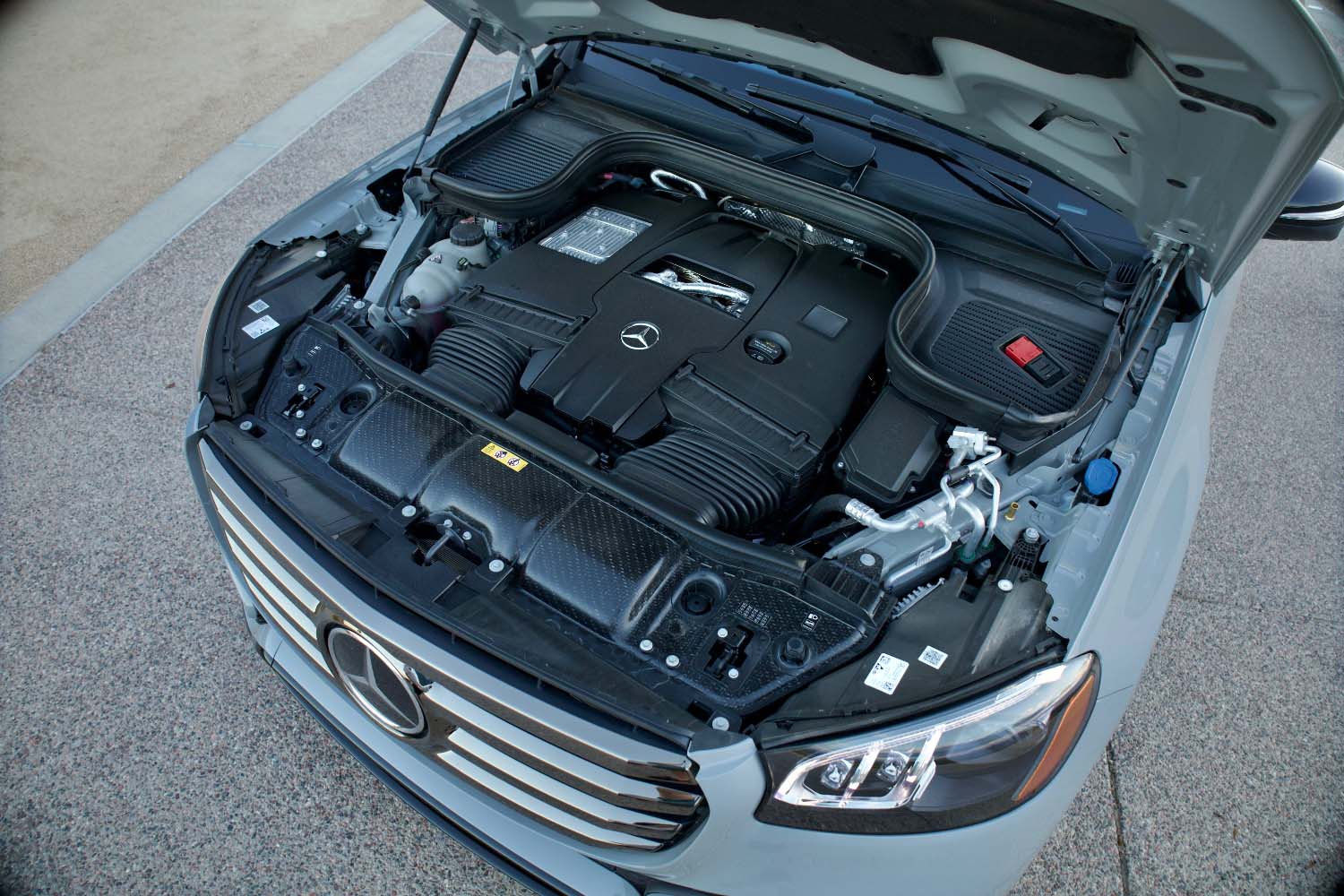 Jim Resnick
Jim Resnick
2024 Mercedes-Benz GLS 580 Review: The Drive
The 2024 GLS 580 increases power from last year's 483 horsepower and 516 pound-feet of torque to 510 horsepower and 538 lb-ft. There's also an additional 21 horsepower and 184 lb-ft of torque from the mild hybrid EQ Boost integrated starter-generator unit. However, it can only produce this added oomph for short bursts.
Trundling around town and in traffic, the V8 murmurs softly. But push down hard on the accelerator pedal and you're shoved forward in a seamlessly building wave of thrust. It feels like a muscle car.
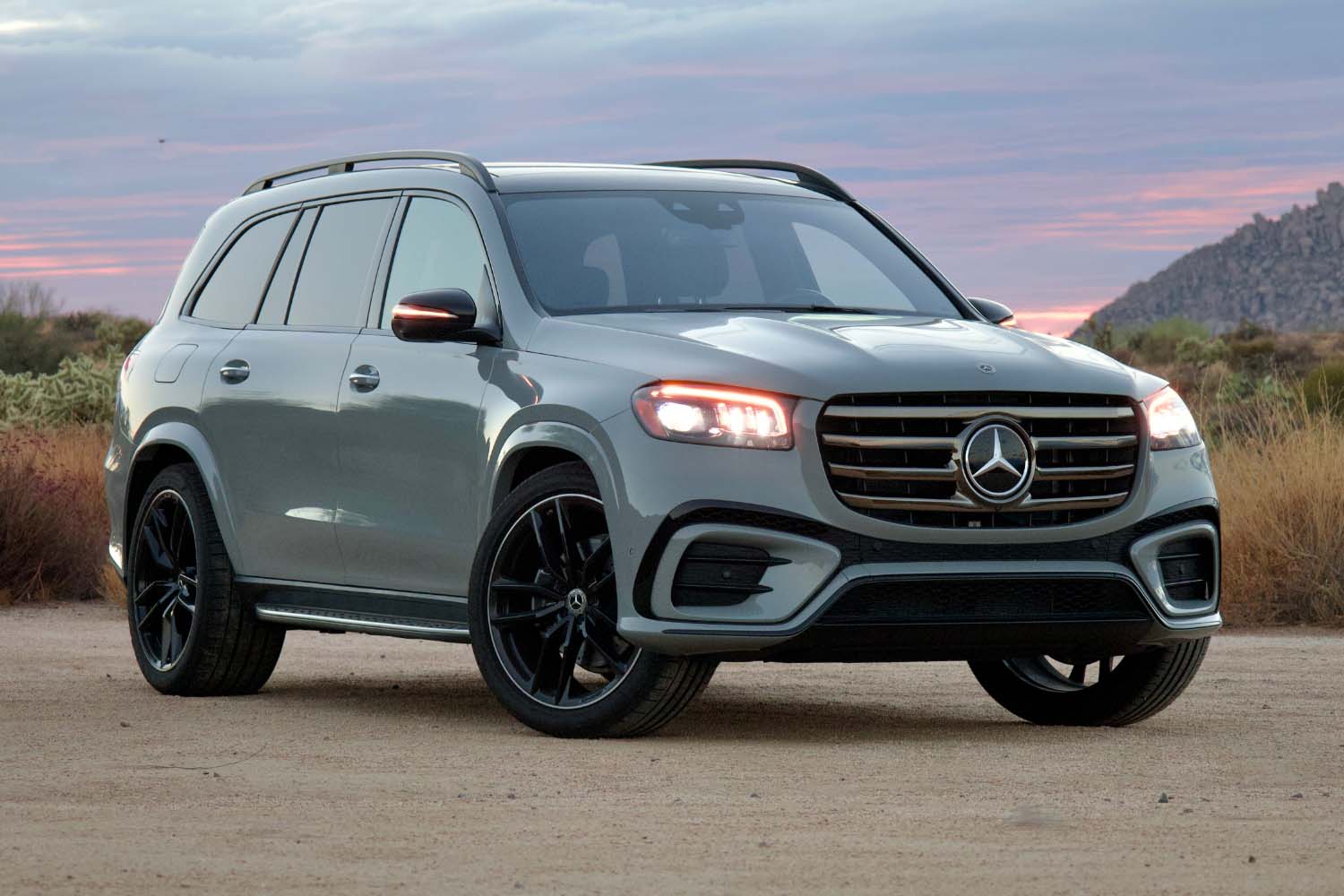 Jim Resnick
Jim Resnick
Mercedes' factory acceleration estimate for the old 483-hp GLS 580 was 5.2 seconds from zero to 60 mph, putting the SUV in a very sporty league. The fact that a big SUV tipping the scales at nearly three tons can scoot up to highway speed and beyond so rapidly is a triumph of engineering over mass.
The GLS 580 has an official EPA fuel-economy rating of 14 mpg in city driving, which plummets if you drive like a drag racer. The flip side of that coin is highway driving, where the GLS 580 posts a 20 mpg rating. Inexplicably, on my mixed 73-mile route of city, suburban, and highway driving in and around Phoenix, the GLS 580 returned 22.1 mpg, even better than the purely highway EPA figure. That's remarkable mileage for such a big, heavy, powerful SUV.
The GLS 580's ride quality is as you like it. Driving modes include Comfort, Sport, Snow, Off-Road, and Individual (which you can program to accommodate your preferences). They stiffen or soften the suspension, change transmission shift characteristics, and alter throttle response from relaxed to aggressive.
I mostly left the GLS 580 in Comfort mode. But the Sport mode does make a real difference on twisty back roads, quelling a lot of sensations that might otherwise make the SUV feel like a fishing trawler on the high seas.
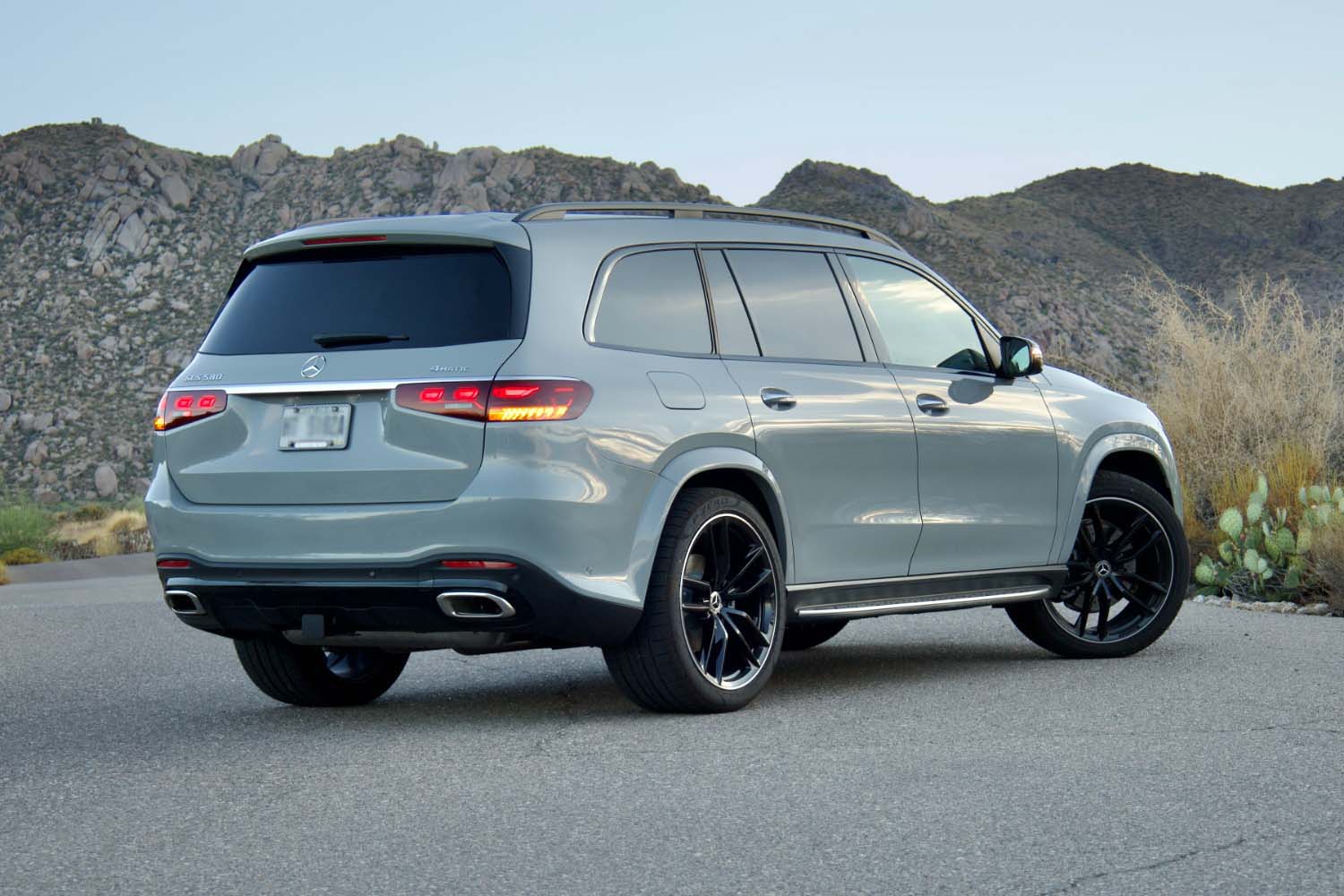 Jim Resnick
Jim Resnick
I did encounter some unusual wet weather for Phoenix and could safely explore handling in those conditions. The GLS 580 negotiated slick conditions well, though I could trigger stability control easily. Straight-line heavy braking in the wet was excellent, even in a panic stop.
Sound isolation is outstanding in the GLS 580, with minimal tire and road noise coming through regardless of the road surface. Wind noise is essentially nonexistent. The test vehicle's Acoustic Comfort package no doubt helps here, with laminated side glass and additional sound absorption in the doors and the rear floor carpeting.
The only area lacking dynamic satisfaction is the steering feel. The lightness of effort required by the GLS 580's steering comes with little feel for the road through the wheel.
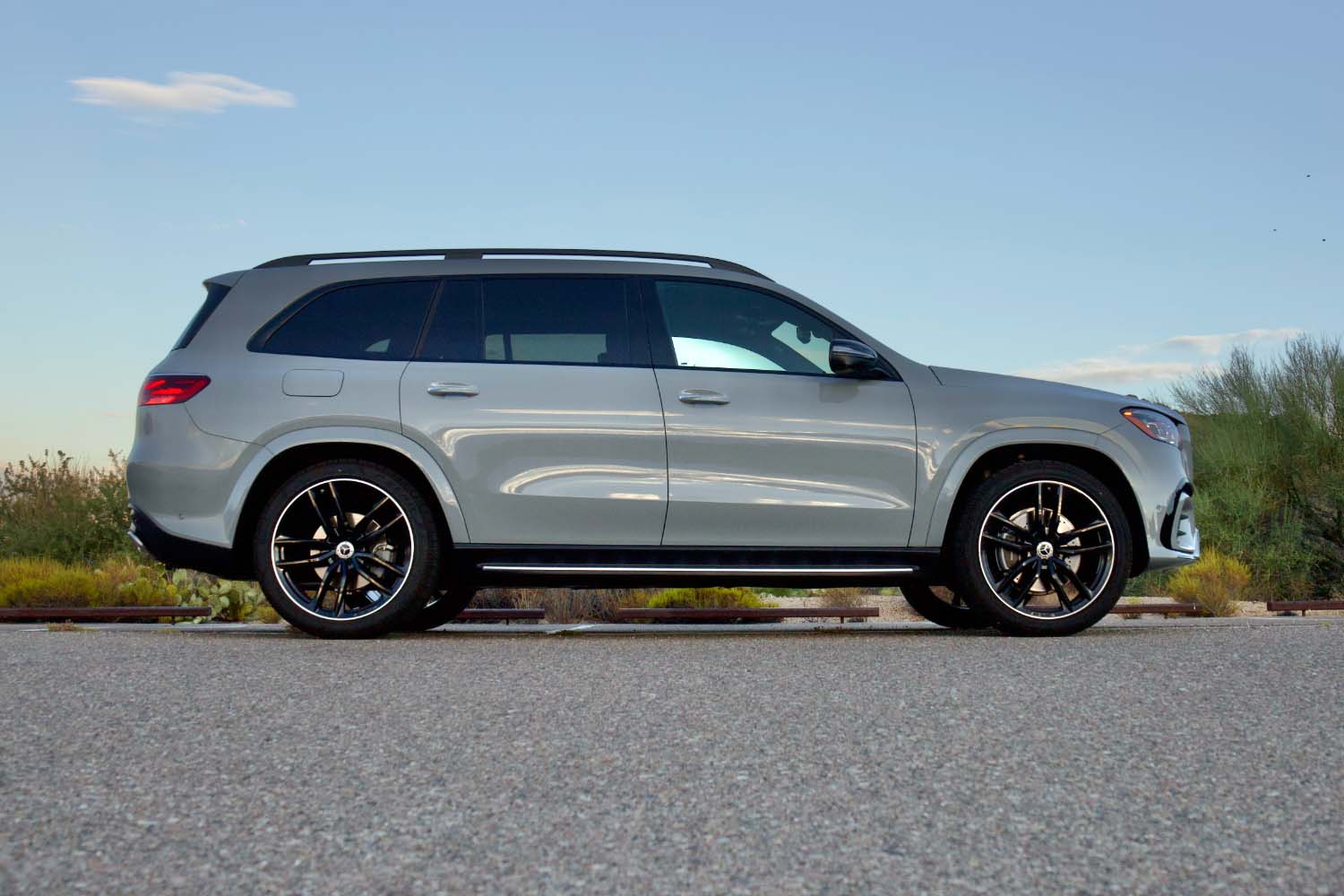 Jim Resnick
Jim Resnick
Is the 2024 Mercedes-Benz GLS 580 a Good SUV?
Is it worth it? That's the big question when testing costly vehicles. This is a multifaceted question masquerading as a simple one.
For a well-heeled family with no financial concerns, the GLS-Class certainly is worth it. In every significant area of performance, quality, user-friendliness, helpful and meaningful tech — and even the softer subjective evaluation areas such as design and style — the GLS is a winner.
There are many similarly designed SUVs that are far easier on the wallet, providing room for a big family or for toting lots of cargo, such as Chevrolet's Tahoe and Suburban or Ford's Expedition. And even though those large SUVs do not play in the luxury sandbox, they offer more refinement, choices, and helpful technology than ever before.
The 2024 Mercedes-Benz GLS 580 is an excellent choice for a large luxury SUV if your budget allows. And for the as-tested price of $128,880, it should provide that kind of space, pace, and grace.
Written by humans.
Edited by humans.
 Jim Resnick
Jim ResnickFrom racing exotic sports cars, to ranking new cars, to peeling back layers of cover up in an exhaust emissions scandal, Jim has chronicled the automotive sector for decades. Jim has also worked inside the corporate headquarters of three carmakers, and therefore understands how the automotive sausage is really made. But Jim’s affinity for vehicles takes a back seat to finding the truth and the cultural implications of modern transportation. He has also lectured at universities to engineering and policy students and faculty on the industry’s relationship with legislation in the wake of the diesel exhaust emissions scandal several years ago. Put simply, Jim reports on autos, mobility, tech, car culture, and the traffic jam of topics within.

